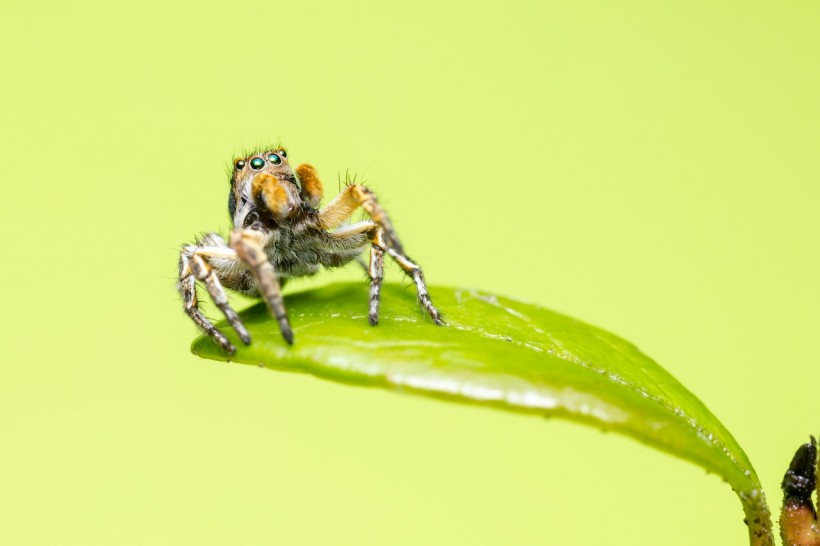Adult jumping spiders are known for their keen eyesight and extraordinary visual behaviors. This is connected to their excellent communication abilities, navigation skills, and predatory strategies. Juvenile spiders also demonstrate these behaviors, although it is no surprise that predators like them have sharp vision because they need this adaptation for hunting. However, it remains a mystery how they manage it.

Baby Jumping Spiders Have Adult-Like Eyesight
A group of biologists from the University of Cincinnati (UC) discovered that baby jumping spiders have eyesight that is as good as older spiders.
Led by UC associate professor Nathan Morehouse, the team investigated how a keen vision's architecture fits these animals' tiny bodies. A customized micro-ophthalmoscope was used to examine the eyes of baby spiders. Meanwhile, the ability of the photoreceptor cells to absorb light was measured using microspectrophotometry in the UC laboratory.
They discovered that the hatchlings have 8,000 photoreceptors in their eyes, just like adult spiders. Their photoreceptors may be smaller, but they are packed more closely together to fit in smaller volumes. Most photoreceptor cells are shaped like cylinders to fit more side by side and keep the spider's ability to distinguish objects at a distance.
Microscopic analysis of the eyes of baby spiders also reveals that they start their life cycle with eyes larger than the rest of their bodies, so the eyes do not have as much growing to do as they mature. Humans normally take three to five years before children can reach the visual acuity of adults. According to biologist John Thomas Gote from the University of Pittsburgh, baby jumping spiders can achieve this feat when they leave their nest.
This explains why the younger jumping spiders can hunt prey as effectively as older members. However, having smaller photoreceptors also has disadvantages. Baby spiders cannot see well in the dark because their eyes cannot capture as much light. Because of this, they show stumbly movements at a young age.
Jumping Spider's Remarkable Senses
Jumping spiders are a group of predators that belong to the family Salticidae. They earned their name from their highly coordinated ability to jump while capturing prey and transferring from one plant to another.
Aside from their sharp vision, jumping spiders were also found to use vibrations for communication effectively. During courtship, male jumping spiders use elaborate vibrations with their dancing moves and send them to the female through the ground.
For many years, scientists thought that spiders relied mainly on their vision and touch since they do not have ears. However, studies suggest that some jumping spiders can detect sound as far as 10 feet away. Unlike mammals who pick up sound through the ears, jumping spiders use specialized sensory hairs in their bodies to sense the movement of air, which they associate with audible signals.
Although loud sounds travel through the air, they may also create vibrations in the objects in the surroundings, such as leaves on the ground. In natural environments, jumping spiders might sense loud sounds from airborne and vibrational aspects.
RELATED ARTICLE: Can Spiders Dream? Scientists Say They May Experience REM-Like Twitches When Sleeping
Check out more news and information on Jumping Spiders in Science Times.














